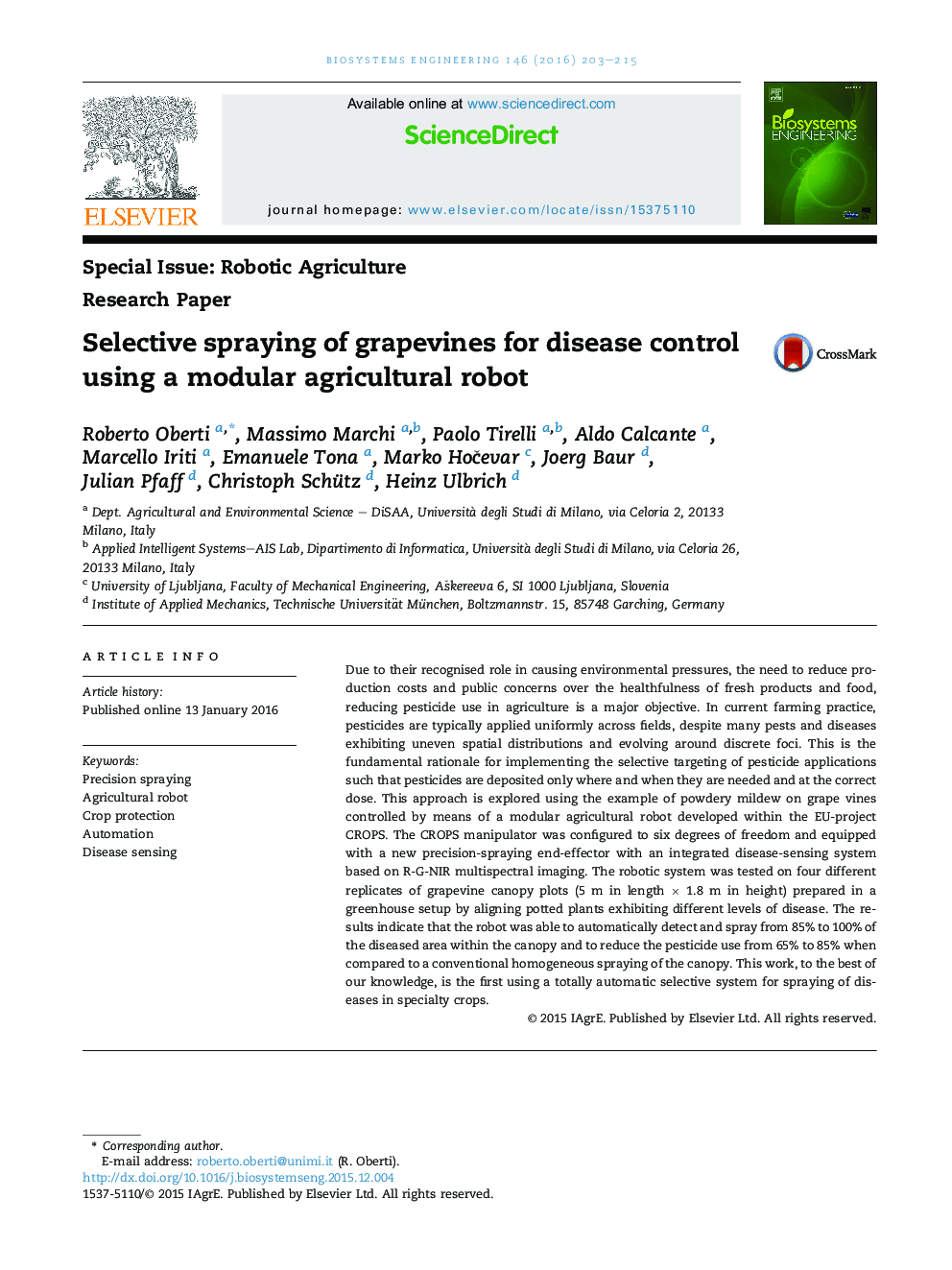| Article ID | Journal | Published Year | Pages | File Type |
|---|---|---|---|---|
| 8055143 | Biosystems Engineering | 2016 | 13 Pages |
Abstract
Due to their recognised role in causing environmental pressures, the need to reduce production costs and public concerns over the healthfulness of fresh products and food, reducing pesticide use in agriculture is a major objective. In current farming practice, pesticides are typically applied uniformly across fields, despite many pests and diseases exhibiting uneven spatial distributions and evolving around discrete foci. This is the fundamental rationale for implementing the selective targeting of pesticide applications such that pesticides are deposited only where and when they are needed and at the correct dose. This approach is explored using the example of powdery mildew on grape vines controlled by means of a modular agricultural robot developed within the EU-project CROPS. The CROPS manipulator was configured to six degrees of freedom and equipped with a new precision-spraying end-effector with an integrated disease-sensing system based on R-G-NIR multispectral imaging. The robotic system was tested on four different replicates of grapevine canopy plots (5 m in length Ã 1.8 m in height) prepared in a greenhouse setup by aligning potted plants exhibiting different levels of disease. The results indicate that the robot was able to automatically detect and spray from 85% to 100% of the diseased area within the canopy and to reduce the pesticide use from 65% to 85% when compared to a conventional homogeneous spraying of the canopy. This work, to the best of our knowledge, is the first using a totally automatic selective system for spraying of diseases in specialty crops.
Related Topics
Physical Sciences and Engineering
Engineering
Control and Systems Engineering
Authors
Roberto Oberti, Massimo Marchi, Paolo Tirelli, Aldo Calcante, Marcello Iriti, Emanuele Tona, Marko HoÄevar, Joerg Baur, Julian Pfaff, Christoph Schütz, Heinz Ulbrich,
